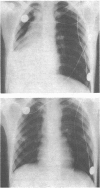Abstract
Reduction of the partial pressure of carbon dioxide in the arterial blood by mechanical hyperventilation (Pco2 25-30 mm Hg; Po2 100-150 mm Hg) may be beneficial in cases of severe head injury. To evaluate its efficacy and establish prognostic guidelines intracranial pressure, radiocirculograms, and cerebrospinal fluid (C.S.F.) lactate levels were studied in 31 patients. In survivors intracranial pressure fell and cerebral blood flow improved with treatment. A C.S.F. lactate greater than 55 mg/100 ml was associated with a poor prognosis. Selection of patients was based on clinical judgement, and adults with signs of extensive brain damage were excluded. The importance of an adequate airway and resuscitation is stressed before a final decision is made. The object of treatment is to improve the quality of survival and the criteria measured may aid in the distinction between patients with a potential for good recovery and those capable only of a vegetative existence. Many associated factors as well as hypocapnia reduce intracranial pressure, and these are discussed. We believe that hyperventilation may improve some head injuries, and further study is indicated.
Full text
PDF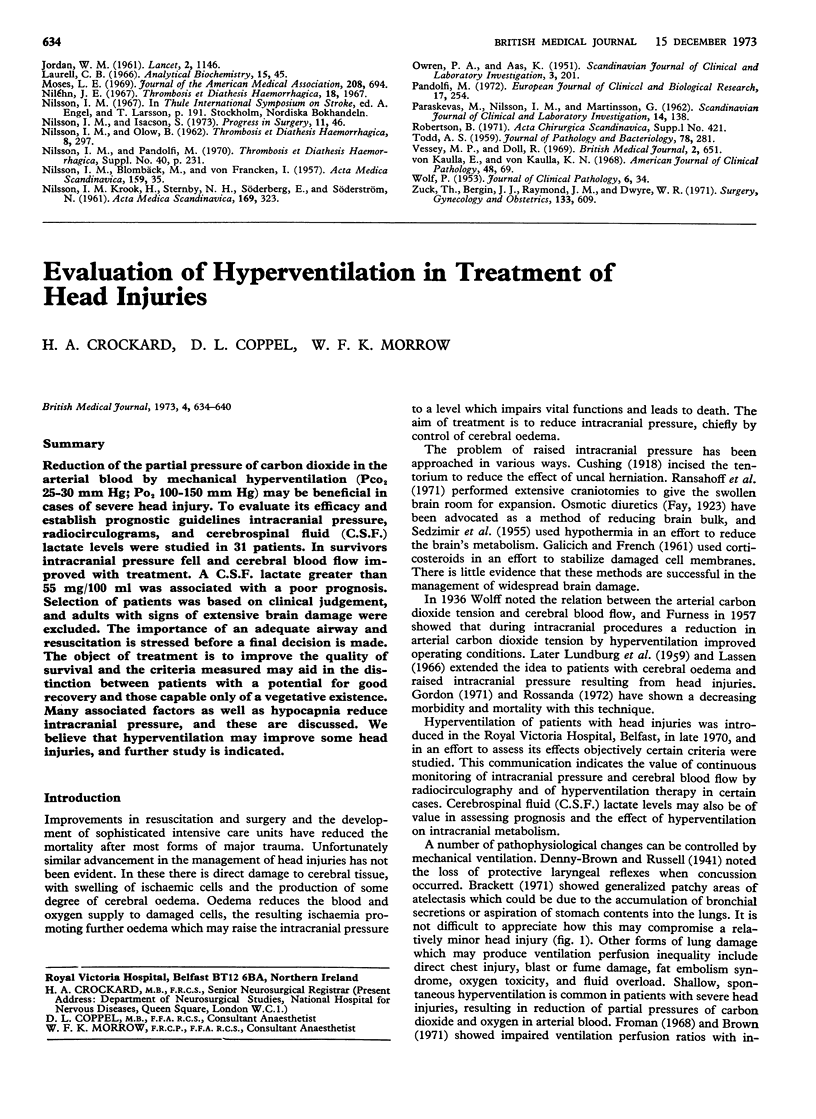

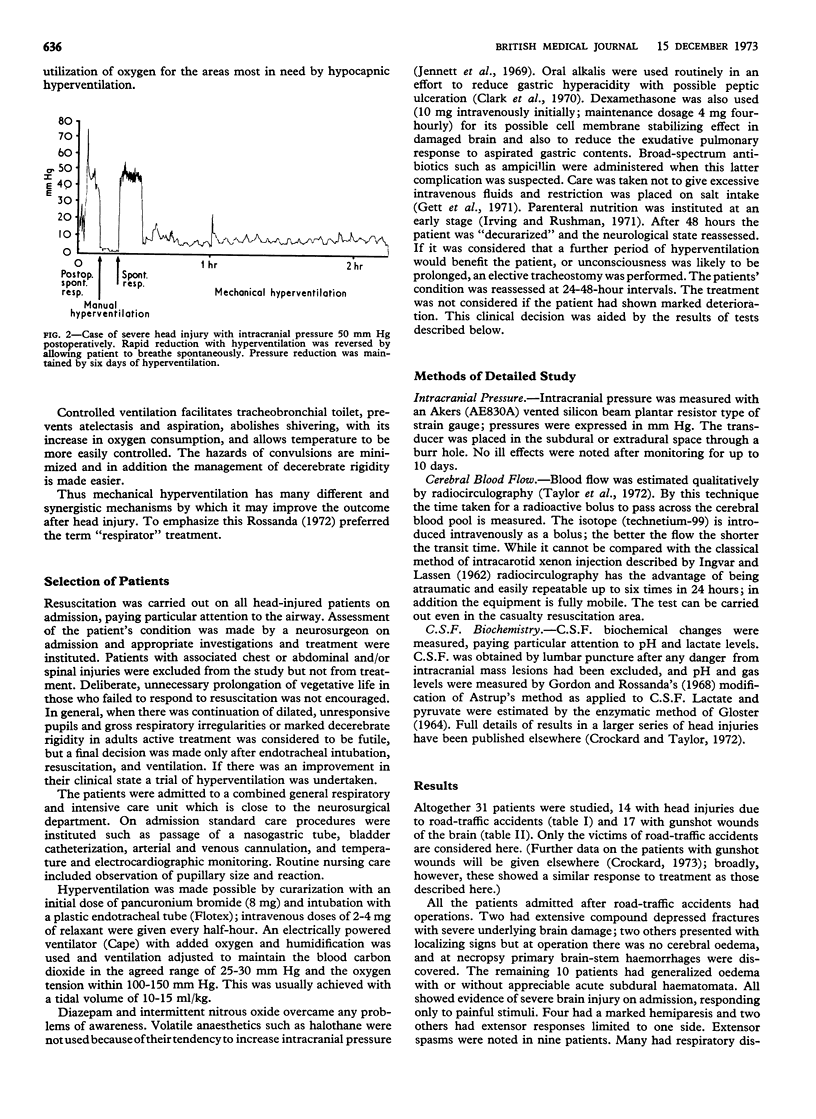
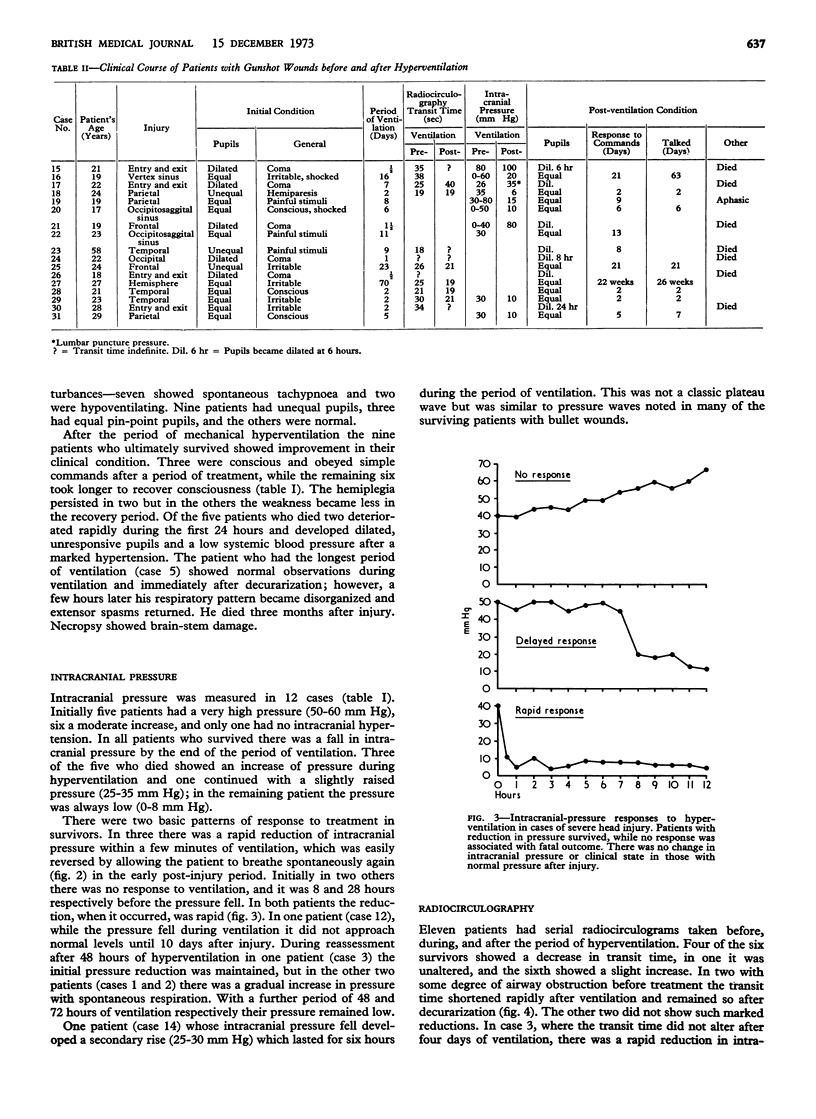
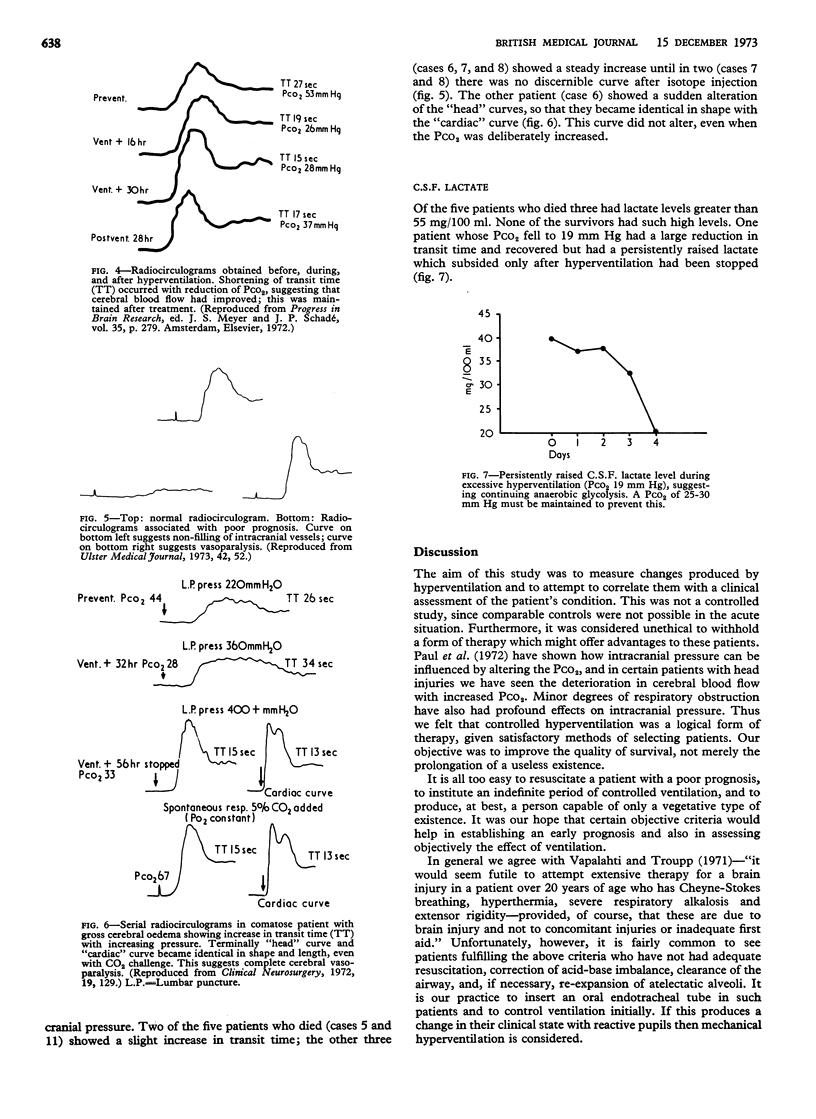
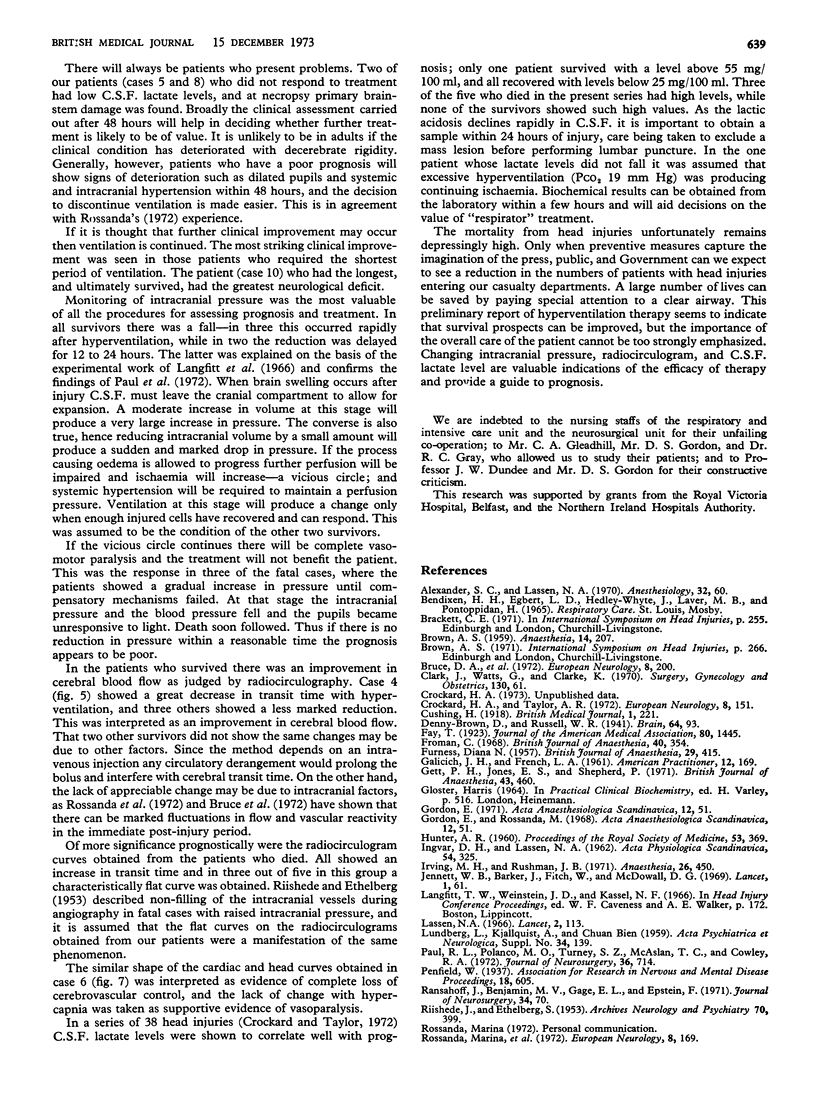
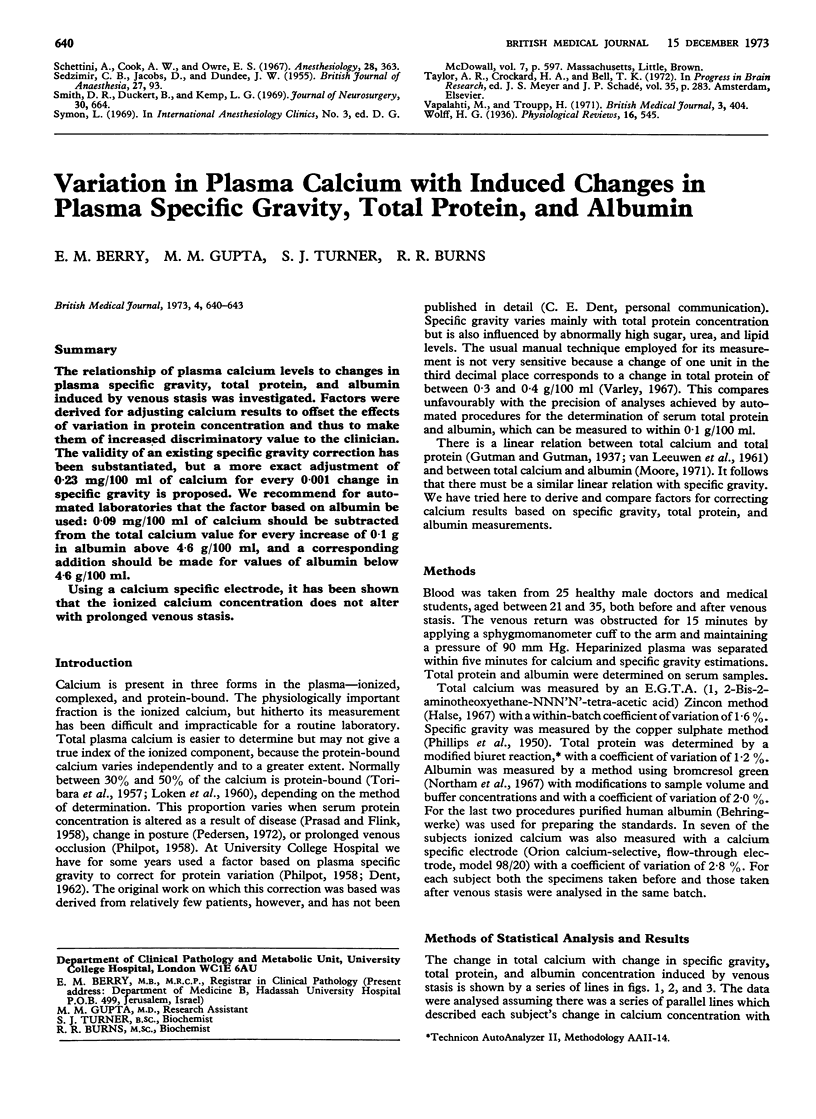
Images in this article
Selected References
These references are in PubMed. This may not be the complete list of references from this article.
- Alexander S. C., Lassen N. A. Cerebral circulatory response to acute brain disease: Implications for anesthetic practice. Anesthesiology. 1970 Jan;32(1):60–68. doi: 10.1097/00000542-197001000-00013. [DOI] [PubMed] [Google Scholar]
- Bruce D. A., Miller J. D., Langfitt T. W., Goldberg H. I., Stanek A. E., Vapalahti M. rCBF and intracranial pressure in comatose patients. Eur Neurol. 1972;8(1):200–206. doi: 10.1159/000114578. [DOI] [PubMed] [Google Scholar]
- Crockard H. A., Taylor A. R. Serial CSF lactate-pyruvate values as a guide to prognosis in head injury coma. Eur Neurol. 1972;8(1):151–157. doi: 10.1159/000114569. [DOI] [PubMed] [Google Scholar]
- Froman C. Alterations of respiratory function in patients with severe head injuries. Br J Anaesth. 1968 May;40(5):354–360. doi: 10.1093/bja/40.5.354. [DOI] [PubMed] [Google Scholar]
- GALICICH J. H., FRENCH L. A. Use of dexamethasone in the treatment of cerebral edema resulting from brain tumors and brain surgery. Am Pract Dig Treat. 1961 Mar;12:169–174. [PubMed] [Google Scholar]
- Gett P. M., Jones E. S., Shepherd G. F. Pulmonary oedema associated with sodium retention during ventilator treatment. Br J Anaesth. 1971 May;43(5):460–470. doi: 10.1093/bja/43.5.460. [DOI] [PubMed] [Google Scholar]
- Gordon E., Rossanda M. The importance of the cerebrospinal fluid acid-base status in the treatment of unconscious patients with brain lesions. Acta Anaesthesiol Scand. 1968;12(2):51–73. doi: 10.1111/j.1399-6576.1968.tb00411.x. [DOI] [PubMed] [Google Scholar]
- Gordon E., Rossanda M. The importance of the cerebrospinal fluid acid-base status in the treatment of unconscious patients with brain lesions. Acta Anaesthesiol Scand. 1968;12(2):51–73. doi: 10.1111/j.1399-6576.1968.tb00411.x. [DOI] [PubMed] [Google Scholar]
- Irving M. H., Rushman G. B. Parenteral nutrition for the surgical patient. A review of indications and current practice. Anaesthesia. 1971 Oct;26(4):450–467. doi: 10.1111/j.1365-2044.1971.tb04821.x. [DOI] [PubMed] [Google Scholar]
- Jennett W. B., Barker J., Fitch W., McDowall D. G. Effect of anaesthesia on intracranial pressure in patients with space-occupying lesions. Lancet. 1969 Jan 11;1(7585):61–64. doi: 10.1016/s0140-6736(69)91087-3. [DOI] [PubMed] [Google Scholar]
- Paul R. L., Polanco O., Turney S. Z., McAslan T. C., Cowley R. A. Intracranial pressure responses to alterations in arterial carbon dioxide pressure in patients with head injuries. J Neurosurg. 1972 Jun;36(6):714–720. doi: 10.3171/jns.1972.36.6.0714. [DOI] [PubMed] [Google Scholar]
- RIISHEDE J., ETHELBERG S. Angiographic changes in sudden and severe herniation of brain stem through tentorial incisure; report of five cases. AMA Arch Neurol Psychiatry. 1953 Sep;70(3):399–409. doi: 10.1001/archneurpsyc.1953.02320330124011. [DOI] [PubMed] [Google Scholar]
- Schettini A., Cook A. W., Owre E. S. Hyperventilation in craniotomy for brain tumor. Anesthesiology. 1967 Mar-Apr;28(2):363–371. doi: 10.1097/00000542-196703000-00017. [DOI] [PubMed] [Google Scholar]
- Taylor A. R., Crockard H. A., Bell T. K. Radiocirculography--a profile of cerebral circulation. Clinical uses and limitations. Prog Brain Res. 1972;35:263–283. doi: 10.1016/S0079-6123(08)60096-5. [DOI] [PubMed] [Google Scholar]
- Vapalahti M., Troupp H. Prognosis for patients with severe brain injuries. Br Med J. 1971 Aug 14;3(5771):404–407. doi: 10.1136/bmj.3.5771.404. [DOI] [PMC free article] [PubMed] [Google Scholar]



